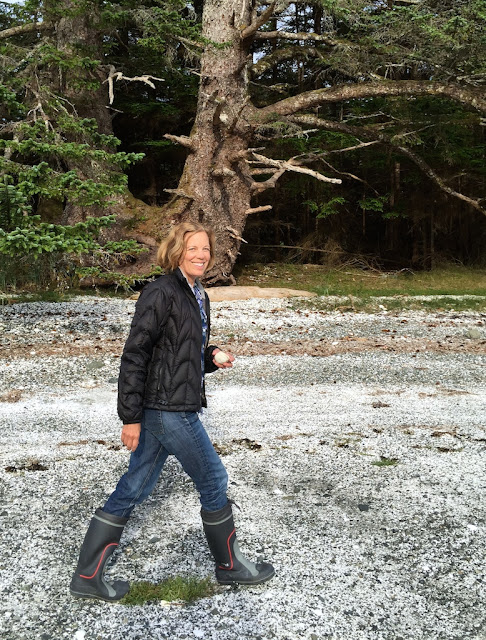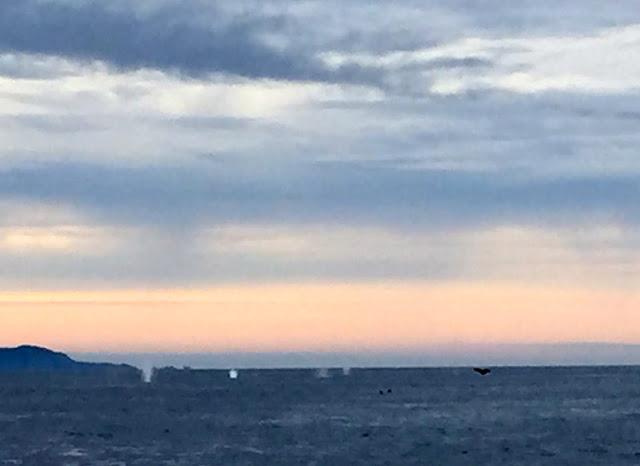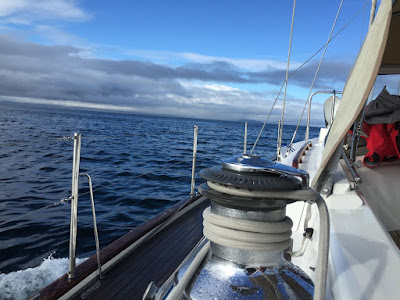 |
| Tough Week, SV Heron |
RAIN AGAIN.
SINCE WE'D BEEN PUSHING HARD, MAKING GOOD TIME, WE DECIDED TO HANG IN BOTTLENECK INLET, THEN RUN JUST 20 MILES OR SO TO KHUTZE BAY. WHEN WE WENT TO START THE ENGINE, HOWEVER, THE KEY TURNED, CLICKED, AND THAT WAS IT.
Turn, click. Silence.
Turn, click.
Silence.
We’ve had this issue with Heron over the years… thus, installed a new starter this year.
Turn, click. Nothing.
Jeff went to bang on the solenoids and I took
over. Turn, click. Turn, click.
We tried to start the engine about 75 times. No dice. This is not a good feeling. It’s especially not a good
feeling when you’re anchored in an inlet this far off the grid, far past the
middle of nowhere, and your plan
is to go even farther.
Finally, on about try 80 or 90 the big Yanmar catches and
rumbles to life. It doesn’t give
us confidence, though. In fact, we
are very quickly losing confidence.
It’s dumping rain. We’ve
lost our crab trap. Our engine
barely starts...
We pull out the Yanmar Diesel manual, which pretty much
falls open to “Trouble and Troubleshooting Starter Failures,” since we’ve spent
time trouble-shooting the starter before.
Never this far out of range, though. We work through the various scenarios,
check all the starter wires and relays.
By now we’ve got both doors to the engine compartment peeled open, and are
crawling around with flash lights, crescent wrenches, and a long-handled mirror like the one a dentist uses but about a hundred times bigger.
Jeff finds a single wire he can barely reach tucked way behind the engine. It looks like it might
have been crimped, so he straightens it, and we actually say a sort of prayer. But by now it’s too late to go anywhere so we stay another night in the aptly named
Bottleneck Inlet.
At what point is it unwise to keep going farther into the wilderness? This is a hard
question with no clear-cut answers.
We try the engine again. It
starts on the first try. It starts
on the second try. But not on the
third…
We decide we won’t decide whether to turn
right (and on to Haida Gwaii), or left (retreating South to safer waters), until we try to start the engine the next morning. If it starts we’ll go. If it doesn’t we’ll turn back. Sort of
like flipping a coin if the coin happens to be a 1,000-pound Yanmar Diesel.
When we wake up we have no idea, literally, if we’ll be
heading on, or turning back.
Uncharacteristically, neither of us can make the call on our
own. It’s too hard a choice, too easy to psyche ourselves out.
We wake early, turn the key, and…. Chuga-chuga-chug!!
The engine springs to life the first
try. Heron evidently does want to continue the trip
after all, so we high-five one another and turn right, heading North toward
Hartley Bay, our next stop on the very long journey to Haida Gwaii.


































